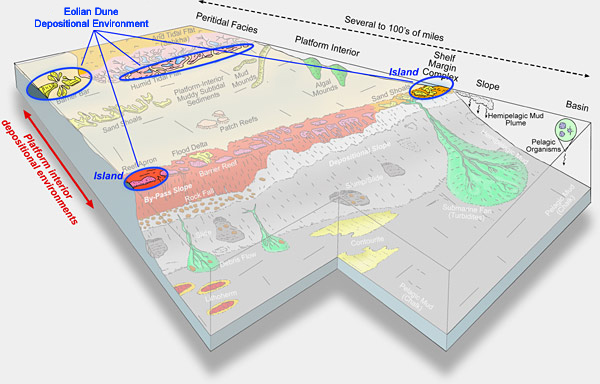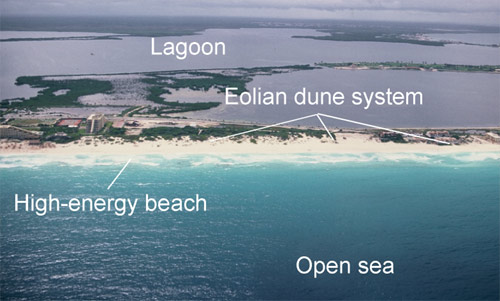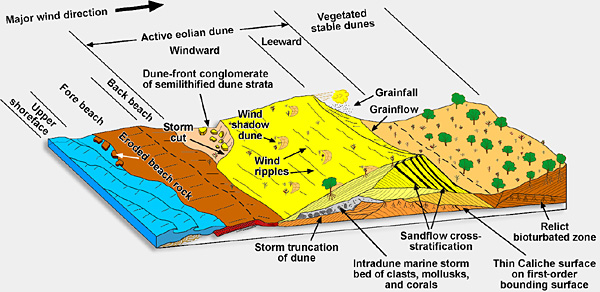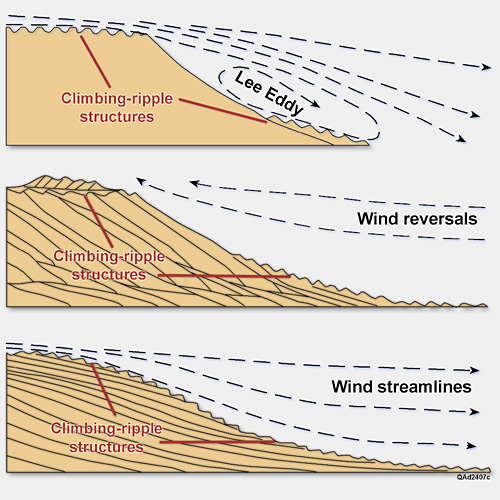| |
|
Carbonate Eolian
Dune Stratification Types
Hunter
(1977) and Loucks and Ward (2001) described stratification
and other features of coastal dunes.
Climbing
translatent stratification (wind-ripple laminations):
Laminae are generated by wind ripples migrating across the
dune. The ripples produce thin, isopachous laminae on low-angle
slopes. |
| |
Schematic
diagram showing development of wind-ripple laminations.
Modified from Hunter (1977). |
| |
|
|
 |
|
| |
Example:
Isla Cancun |
|
Example:
Jamaica |
|
|
|
|
| Grainfall
lamination: They develop on leeward sides of dunes.
Airborne grains fall onto the foreset slope, forming relatively
high-angle and uniform, but diffuse laminae that commonly
pinch out downdip. |
|
Schematic
diagram showing the development of grain-fall laminations.
Modified from Hunter (1977).
|
| |
|
|
 |
|
| |
Example:
Isla Cancun |
|
Example:
Jamaica |
|
|
| |
| |
| |
| Sandflow
cross-stratification: Generated by avalanching
of tongue-shaped and cone-shaped masses of noncohesive sand
down foreset slip faces, whose inclination is at the angle
of repose. |
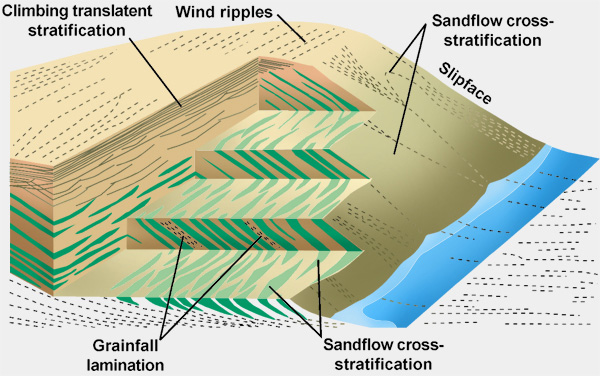 |
| Schematic
diagram showing the development of sand-flow laminations.
Modified from Hunter (1977). |
| |
|
|
 |
|
| |
Example:
Isla Cancun |
|
Example:
Jamaica |
|
|
| |
Dune-front
conglomerates: Deposits of eroded eolianite clasts
produced where storm waves erode the seaward side of weakly
to well-lithified dunes.
Schematic
diagram showing development of sandflow cross-stratification.
Modified from Hunter (1977). |
|
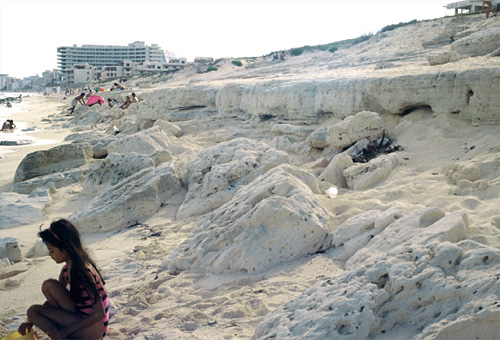 |
Dune-front
conglomerate formed by erosion of the toe of the dune.
From Loucks and Ward (2001). |
|
| |
| |
| |
| Intradune
marine storm deposits:
As a dune is decapitated during a storm, reworked marine sediments
are deposited on the eroded surface. Boulder-sized material
can be transported onto this surface. |
| |
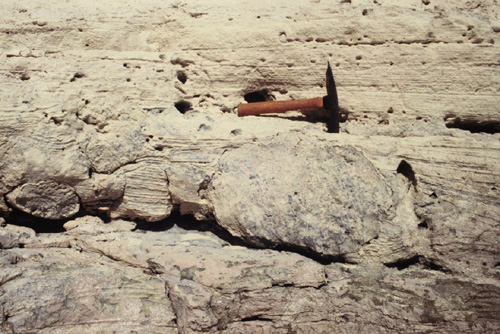 |
| Isla
Cancun outcrop showing intradune marine storm deposits
composed of corals and other clasts. From Loucks and
Ward (2001). |
|
| |
|
| |
|
|
|




